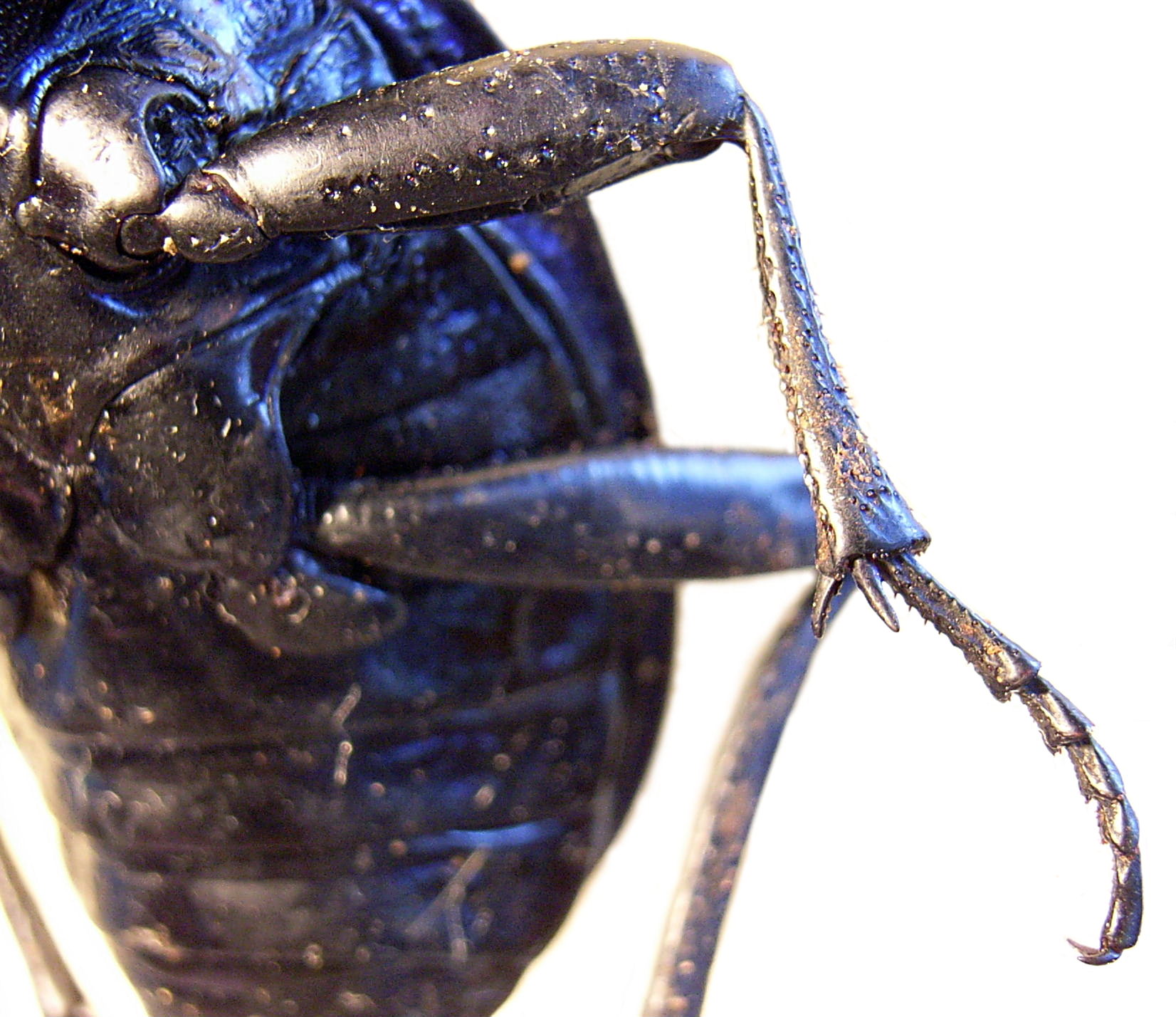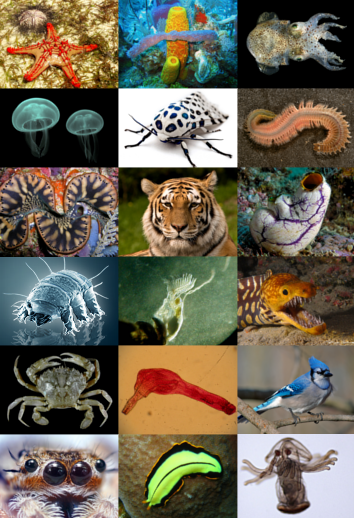|
Skaracarida
''Skara'' is a genus of oligostracan pancrustaceans known from the Upper Cambrian Orsten deposit of Sweden, similarly aged deposits in China, and possibly Poland. It is the only genus in the order Skaracarida and family Skaraidae, and contains three species, ''S. anulata'', ''S. minuta'' and ''S. hunanensis''. Description ''Skara'' has a head with five segments which each contain an appendage pair; two pairs of antennae, a pair of mandibules and two pairs of maxillae. ''S. anulatas head shield resembles an inverted “U” in cross-section, and has been likened to an upside-down dinghy in shape, with a margin at its edge and slightly bulging rims. The forehead bears a rod-shaped process in ''S. minuta'' (however it is likely broken off in ''S. anulata''), with a tiny pore beneath likely representing a gland opening. The labrum is roughly nose-shaped, with shallow depressions near its posterior end likely representing interior muscles able to move the labrum abaxially. A t ... [...More Info...] [...Related Items...] OR: [Wikipedia] [Google] [Baidu] |
Oligostraca
Oligostraca is a superclass of crustaceans. It consists of the following classes: Class Mystacocarida: Minute crustaceans (0.5 to 1 mm in length) restricted to interstitial marine sediments. Locomotion depends completely on the presence of dorsal and ventral substrates. Class Ostracoda (seed shrimp): Small planktonic, demersal and benthic crustaceans with a cosmopolitan aquatic distribution in both freshwater and marine environments, and a few in damp terrestrial habitats. Often called seed shrimps because their body is enclosed within a small and bivalved (with one exception) carapace, which makes them look like seed. Class Ichthyostraca: :Subclass Branchiura (fish lice): Ectoparasitic crustaceans on marine and freshwater fish, ranging in size from a few millimeters to 30 mm. A carapace is covering most of their body, which is dorsoventrally flattened. They are able to switch hosts several times even as adults. :Subclass Pentastomida (tongue worms): Vermiform endoparasit ... [...More Info...] [...Related Items...] OR: [Wikipedia] [Google] [Baidu] |
Pancrustacea
Pancrustacea is the clade that comprises all crustaceans and all hexapods (insects and relatives). This grouping is contrary to the Atelocerata hypothesis, in which Hexapoda and Myriapoda are sister taxa, and Crustacea are only more distantly related. As of 2010, the Pancrustacea taxon was considered well accepted, with most studies recovering Hexapoda within Crustacea. The clade has also been called Tetraconata, referring to having a four-part cone in the ommatidium. The term "Tetraconata" is preferred by some scientists in order to avoid confusion with the use of "pan-" to indicate a clade that includes a crown group and all of its stem group representatives. Molecular studies A monophyletic Pancrustacea has been supported by several molecular studies, in most of which the subphylum Crustacea is paraphyletic with regard to hexapods (that is, that hexapods, including insects, are derived from crustacean ancestors). This means that within Pancrustacea, only some members are ... [...More Info...] [...Related Items...] OR: [Wikipedia] [Google] [Baidu] |
Fossils And Strata
A fossil (from Classical Latin , ) is any preserved remains, impression, or trace of any once-living thing from a past geological age. Examples include bones, shells, exoskeletons, stone imprints of animals or microbes, objects preserved in amber, hair, petrified wood and DNA remnants. The totality of fossils is known as the ''fossil record''. Though the fossil record is incomplete, numerous studies have demonstrated that there is enough information available to give a good understanding of the pattern of diversification of life on Earth. In addition, the record can predict and fill gaps such as the discovery of ''Tiktaalik'' in the arctic of Canada. Paleontology includes the study of fossils: their age, method of formation, and evolutionary significance. Specimens are sometimes considered to be fossils if they are over 10,000 years old. The oldest fossils are around 3.48 billion years to 4.1 billion years old. Early edition, published online before print. The ob ... [...More Info...] [...Related Items...] OR: [Wikipedia] [Google] [Baidu] |
Maxilliped
An appendage (or outgrowth) is an external body part or natural prolongation that protrudes from an organism's body such as an arm or a leg. Protrusions from single-celled bacteria and archaea are known as cell-surface appendages or surface appendages. In many kinds of eukaryotic cells, the protrusions are known as membrane protrusions or cell appendages (examples include microvilli and cilia). Types in animals In arthropods, an appendage refers to any of the homologous body parts that may extend from a body segment, including antennae, mouthparts (including mandibles, maxillae and maxillipeds), gills, locomotor legs ( pereiopods for walking, and pleopods for swimming), sexual organs (gonopods), and parts of the tail (uropods). Typically, each body segment carries one pair of appendages. An appendage which is modified to assist in feeding is known as a maxilliped or gnathopod. In annelids lateral protrusions from the body are called parapodia. In echinoderms an app ... [...More Info...] [...Related Items...] OR: [Wikipedia] [Google] [Baidu] |
Cambrian Crustaceans
The Cambrian ( ) is the first geological period of the Paleozoic Era, and the Phanerozoic Eon. The Cambrian lasted 51.95 million years from the end of the preceding Ediacaran period 538.8 Ma (million years ago) to the beginning of the Ordovician Period 486.85 Ma. Most of the continents lay in the southern hemisphere surrounded by the vast Panthalassa Ocean. The assembly of Gondwana during the Ediacaran and early Cambrian led to the development of new convergent plate boundaries and continental-margin arc magmatism along its margins that helped drive up global temperatures. Laurentia lay across the equator, separated from Gondwana by the opening Iapetus Ocean. The Cambrian marked a profound change in life on Earth; prior to the Period, the majority of living organisms were small, unicellular and poorly preserved. Complex, multicellular organisms gradually became more common during the Ediacaran, but it was not until the Cambrian that fossil diversity seems to rapidly increase ... [...More Info...] [...Related Items...] OR: [Wikipedia] [Google] [Baidu] |
Maxillopoda
Crustaceans (from Latin meaning: "those with shells" or "crusted ones") are invertebrate animals that constitute one group of arthropods that are traditionally a part of the subphylum Crustacea (), a large, diverse group of mainly aquatic arthropods including decapods (shrimps, prawns, crabs, lobsters and crayfish), seed shrimp, branchiopods, fish lice, krill, remipedes, isopods, barnacles, copepods, opossum shrimps, amphipods and mantis shrimp. The crustacean group can be treated as a subphylum under the clade Mandibulata. It is now well accepted that the hexapods (insects and entognathans) emerged deep in the Crustacean group, with the completed pan-group referred to as Pancrustacea. The three classes Cephalocarida, Branchiopoda and Remipedia are more closely related to the hexapods than they are to any of the other crustaceans ( oligostracans and multicrustaceans). The 67,000 described species range in size from '' Stygotantulus stocki'' at , to the Japanese spider cr ... [...More Info...] [...Related Items...] OR: [Wikipedia] [Google] [Baidu] |
Body Plan
A body plan, (), or ground plan is a set of morphology (biology), morphological phenotypic trait, features common to many members of a phylum of animals. The vertebrates share one body plan, while invertebrates have many. This term, usually applied to animals, envisages a "blueprint" encompassing aspects such as symmetry (biology), symmetry, Germ layer, layers, segmentation (biology), segmentation, nerve, Limb (anatomy), limb, and Gastrointestinal tract, gut disposition. Evolutionary developmental biology seeks to explain the origins of diverse body plans. Body plans have historically been considered to have evolved in a flash in the Ediacaran biota; filling the Cambrian explosion with the results, and a more nuanced understanding of animal evolution suggests gradual development of body plans throughout the early Palaeozoic. Recent studies in animals and plants started to investigate whether evolutionary constraints on body plan structures can explain the presence of development ... [...More Info...] [...Related Items...] OR: [Wikipedia] [Google] [Baidu] |
Journal Of Crustacean Biology
The ''Journal of Crustacean Biology'' is a quarterly peer-reviewed scientific journal in the field of carcinology (crustacean research). It is published by The Crustacean Society and Oxford University Press (formerly by Brill Publishers and Allen Press), and since 2015 the editor-in-chief has been Peter Castro. According to the ''Journal Citation Reports'', its 2016 impact factor is 1.064. The journal has a mandatory publication fee of US$ 115 per printed page for non-members of the SocietyJournal of Crustacean BiologyInstructions for Authors/ref> and an optional open access Open access (OA) is a set of principles and a range of practices through which nominally copyrightable publications are delivered to readers free of access charges or other barriers. With open access strictly defined (according to the 2001 de ... fee of $1830 minimum. References Further reading * * External links Carcinology journals Academic journals established in 1981 English-langua ... [...More Info...] [...Related Items...] OR: [Wikipedia] [Google] [Baidu] |
Copepod
Copepods (; meaning 'oar-feet') are a group of small crustaceans found in nearly every freshwater and saltwater habitat (ecology), habitat. Some species are planktonic (living in the water column), some are benthos, benthic (living on the sediments), several species have Parasitism, parasitic phases, and some continental species may live in limnoterrestrial habitats and other wet terrestrial places, such as swamps, under leaf fall in wet forests, bogs, springs, ephemeral ponds, puddles, damp moss, or water-filled recesses of plants (phytotelmata) such as bromeliads and pitcher plants. Many live underground in marine and freshwater caves, sinkholes, or stream beds. Copepods are sometimes used as Ecological indicator, biodiversity indicators. As with other crustaceans, copepods have a larval form. For copepods, the egg hatches into a Crustacean larvae#Nauplius, nauplius form, with a head and a tail but no true thorax or abdomen. The larva molts several times until it resembles the a ... [...More Info...] [...Related Items...] OR: [Wikipedia] [Google] [Baidu] |
Derocheilocarididae
Derocheilocarididae is a family of marine crustaceans that form part of the meiobenthos. It is the only family in the monotypic order Mystacocaridida, and the monotypic subclass Mystacocarida. These mystacocarids are less than long, and live interstitially in the intertidal zones of sandy beaches. Taxonomy The taxonomy of the mystacocarids is extremely conservative, since all mystacocarids look superficially alike. , the 13 described species are divided between two genera, ''Derocheilocaris'' (eight species) and ''Ctenocheilocaris'' (five species). The first mystacocarids to be found were discovered on a beach in southern New England in 1939. Distribution Mystacocarids occur along the coasts of South and North America, southern Africa, and the western Mediterranean. The lack of records from other parts of the world is "almost certainly" due to a lack of appropriate sampling, rather than a true absence. Description Mystacocarids are tiny pigmentless crustaceans, less than long ... [...More Info...] [...Related Items...] OR: [Wikipedia] [Google] [Baidu] |
Tantulocarida
Tantulocarida is a highly specialised group of parasitic crustaceans that consists of about 33 species, treated as a class in superclass Multicrustacea. They are typically ectoparasites that infest copepods, isopods, tanaids, amphipods and ostracods. Description In the Tantulocarida, animals do not ever present eyes. The tantulus larvae has a head with a ventral oral disc but no appendages, a six-segmented thorax with six pairs of legs, and a limbless abdomen consisting of one to six segments in addition to a telson. The larvae also possesses a cuticular stylet on the cephalon through which they can push a rootlet system for extraction of nutrients from a host. The rootlet system itself is a direct extension of the gut. Body length Members of this subclass are minute – less than in length and have a dramatic reduction in body form compared to other crustaceans, with an unsegmented, sac-like thorax and a much reduced abdomen. One tantulocarid species, ''Tantulacus diet ... [...More Info...] [...Related Items...] OR: [Wikipedia] [Google] [Baidu] |






